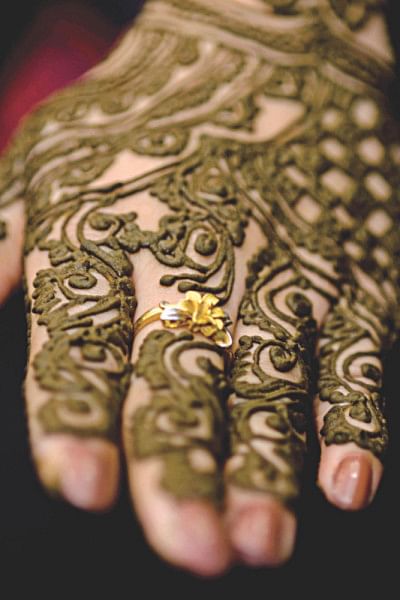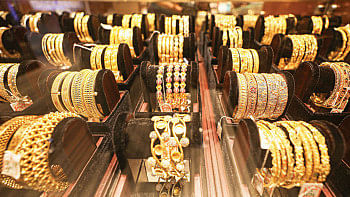Henna-ed Happiness

Henna has come to symbolise celebration, especially in the Eid culture. Intricate patterns of burnished amber and chocolate browns decorating the hands of a bride or of scores of women and girls on Eid bear testament to the fact, and add to the festive ambience. Henna has been around for centuries, but its origin is difficult to trace. Cultural interaction caused by centuries of migration makes it almost impossible to ascertain where the tradition of applying henna began.
The Egyptian Pharaohs were known to have used it. Cleopatra, the last reigning queen of the ancient Egyptian civilization, used henna to adorn her body. Evidence of the use of henna on the hair and nails of Egyptian mummies is apparent by the reddish brown tint found on them. The belief that the naturally derived red substances of henna had the potential to increase one's awareness of the earth's energies lead Egyptian commoners to apply it as well, hoping to help them keep in touch with their spiritual side.
The cultures of the Indian subcontinent and that of many other African countries and the Middle East deeply establish the use of henna. The people of desert countries used henna as a coolant during hot summers. They would slather henna paste on their palms and on to the soles of their feet to cool off, creating an almost air-conditioned effect for the body.
Henna has been apart of African traditions for thousands of years now, and it is likely that henna had been growing in North Africa since the Roman period. An integral part of Nigerian weddings, henna is also called Lalle in the Hausa language of Nigeria, is applied on the brides' hands and is considered a 'barakah' or blessing.
In the Indian subcontinent, the use of henna is clearly depicted in the wall cave murals of Ajanta, and also in similar cave paintings in Sri Lanka, proving the usage of henna in this part of the world for centuries before Mughal takeover. The murals depict the use of henna on the kings, queens, deities and common folk alike, disassociating it from only ceremonious use in early India.
Today, henna art has become a valued aspect of auspicious ceremonies. Generally applied to celebrate weddings, pregnancy, birth of a baby, naming ceremonies etc, Eid along with many other religious occasions are favoured times for henna application. Apart from decorative purposes, henna also has medicinal uses as an herb. It has skin healing properties and can be used as a cleanser. Henna oil is known to have multiple benefits like curing rheumatic pain. Its properties as a dye to help cover greying hair and stain finger nails, acting as a natural nail polish.
Patterned henna application has primarily three broad style categories, namely Indian, Arabian and African. Where Arabian designs are less dense yet large floral and vine patterns, Indian designs involve dense fine lines of lacy, floral, paisley patterns. African designs, however, are starkly different from the former two styles. They are usually simple, yet bold geometric shapes and abstract designs. When it comes to henna art, the sky is the limit. A henna artist is free to etch out any design as the stains are temporary and will fade away in a matter of days.
Henna has virtually become a style statement in the western world. Worn as a temporary tattoo, henna application is a fast growing fashion fad with henna art studios popping up all across the globe. The 'east meets west' culture has ensured an increase in its global popularity.
Interestingly, there are quite a few myths and superstitions connected to henna when applied on a bride's hands. It is believed that the deeper the colour of henna on her hands, the more love she will receive from her husband and mother-in-law. A bride's hand bare of henna are considered inauspicious, robbing the couple of blessings from the heavens. Alternatively, brides in the Middle East adorn themselves with henna to protect themselves from the 'evil eye' that could render a woman barren.
Over centuries, across continents and cultures, henna has stood the test of time, and remains sought after for more reasons than one, even today. Where the use of henna is concerned, change is not the only constant.
Photo: LS Archive/Sazzad Ibne Sayed

 For all latest news, follow The Daily Star's Google News channel.
For all latest news, follow The Daily Star's Google News channel. 



Comments